Hunting elk in the rain can be both a challenging and rewarding experience. We have some tips for how to hunt elk in the rain. The rain can bring out the best of the elk’s senses and make them more difficult to track. However, if you properly prepare and plan for the elements, you can enjoy a successful hunt. In this guide, we will cover the tips and strategies for hunting elk in the rain, from the right clothing and gear to the best tactics for hunting in wet conditions. By the time you finish reading, you’ll have the knowledge to make the most of your next elk hunting trip – even when the rain is pouring down.
Table of Contents
What Gear to Pack for Elk Hunting in the Rain
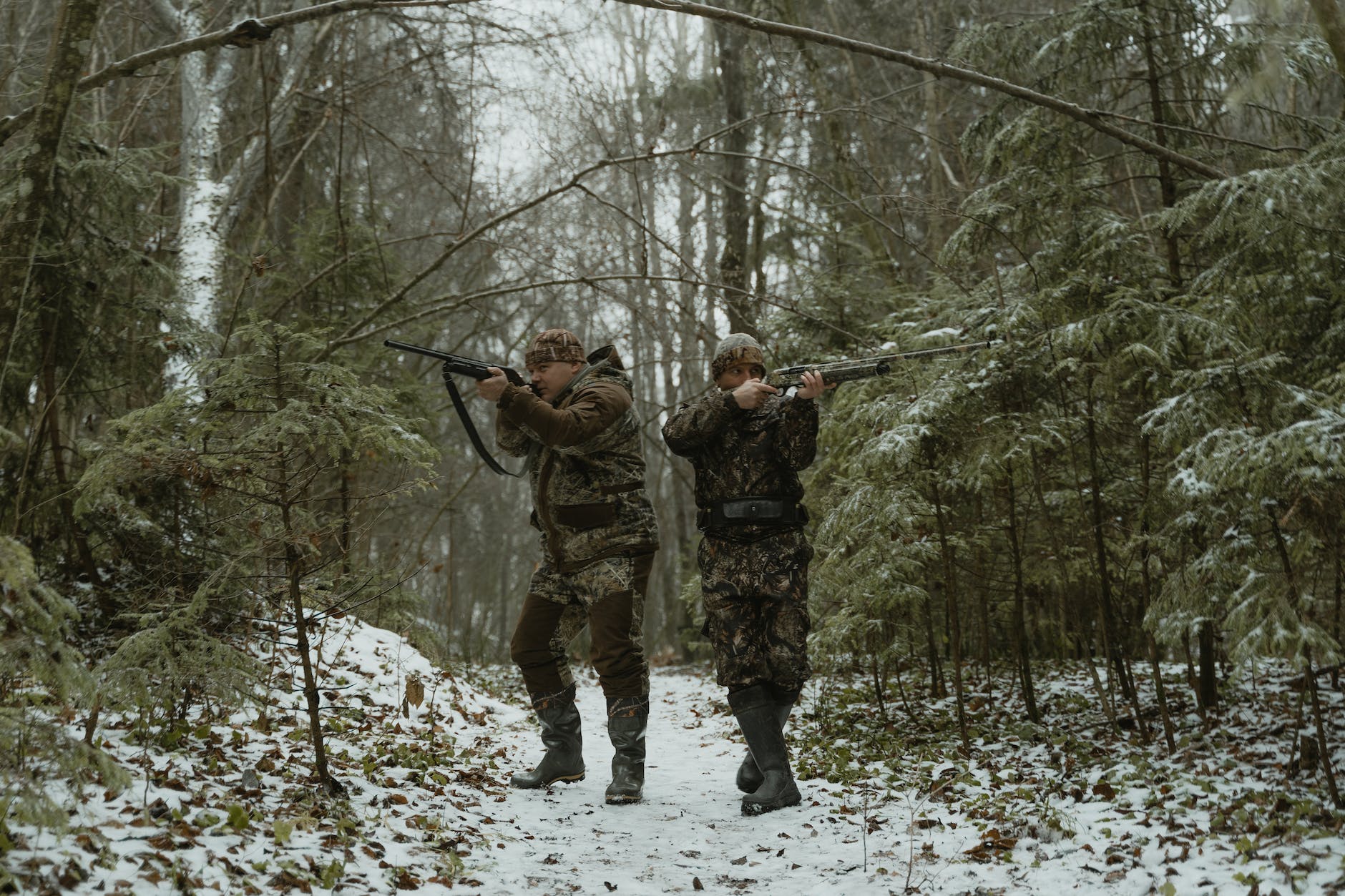
The first topic on how to hunt elk in the rain is proper preparation. When you set out to hunt elk in the rain, it is important to make that you have the right gear. Every experience hunter knows that not having the proper gear can lead to disaster. You don’t want to be stuck out in the rain or snow without proper gear. Here is a list of must-have items to keep you dry, warm, and comfortable during your hunt:
- Waterproof Outerwear: A waterproof outer layer is key for keeping you dry and comfortable during your hunt. Choose a jacket with a hood to keep your head and neck protected from the rain. Also, make sure to pack some waterproof pants to keep your legs dry and warm. You want to ensure that you have the correct waterproof camo so that you can hunt elk in the rain.
- Hat and Gloves: When hunting in the rain, it is important to have a hat and a pair of waterproof gloves to keep your hands and head warm. A beanie or knit cap is a great option for keeping your head warm and dry.
- Rain Boots: A good pair of rain boots is essential for keeping your feet dry. Look for a pair that is both waterproof and insulated to keep your feet warm and dry in wet weather. Check out our article on the best hunting boots for men to get some other ideas.
- Waterproof Backpack: Keeping your backpack dry is important for protecting your gear. Make sure to pack a waterproof backpack to keep your gear protected from the elements.
- Extra Socks: Having an extra pair of socks is always a good idea when hunting in the rain. Pack a pair of thick wool socks to keep your feet warm and dry.
- Emergency Shelter: An emergency shelter is essential for staying dry in the case of unexpected rain. Pack a lightweight emergency shelter that is both waterproof and lightweight.
- A GPS or map: If you’re hunting in a unfamiliar location, a GPS could be a life saver. If you’re not ready to spend the money on a GPS, a good compass and map will be fine.
You cannot neglect your hunting hear when you plan to hunt elk in the rain. By packing the right gear, you can stay dry, warm, and comfortable during your elk hunt. The longer that you can stay dry and warm, the more chances you have to spot that trophy elk.
Preparing for the Unexpected: How to Hunt Elk in the Rain
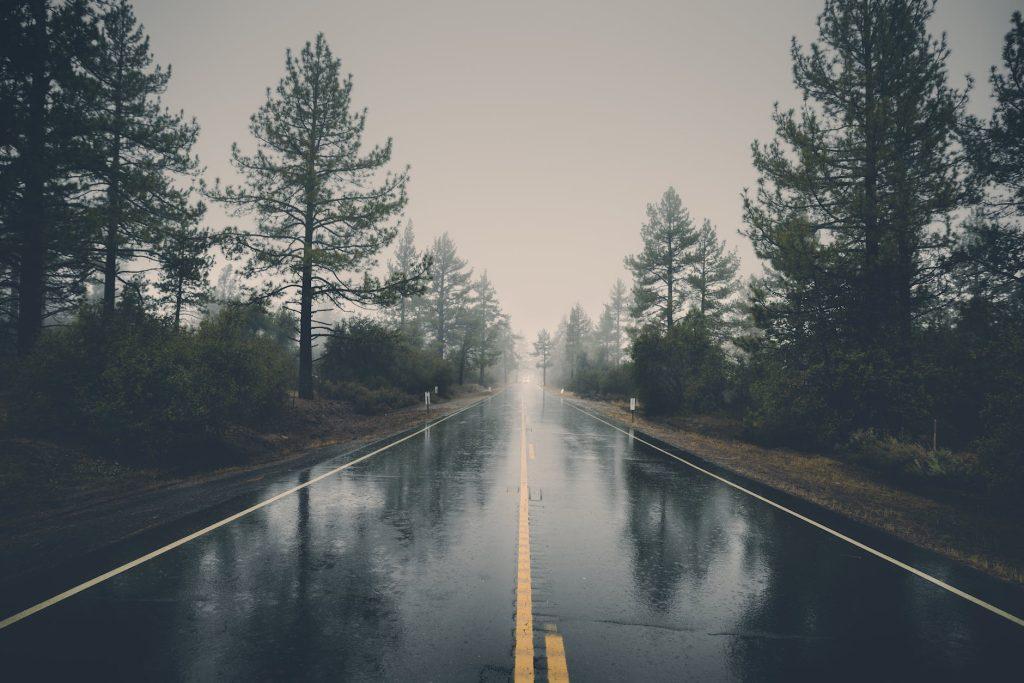
Weather can be a challenge when you want to hunt elk in the rain, but it is still possible to have a successful hunt. To prepare for the unexpected, here are a few tips to help make your elk hunting experience enjoyable and successful even in the rain.
First, make sure you are properly dressed for the rain. Layering your clothing is key; wear a waterproof outer layer and a breathable layer underneath. Make sure your boots and socks are waterproof as well. Having wet feet can make a difference in a long day of hunting.
Second, pick the right spot. Look for areas with a lot of cover, such as thick trees or tall brush. This will offer you some protection from the rain and will keep you dry. It is also a good idea to bring a tarp or some type of shelter to set up in case of extended rain.
Third, stay active. Elk often move to higher ground when it rains, so it is important to keep an eye out for signs of their activity. Listen for their bugles and keep an eye out for tracks. If you stay active, you are more likely to find the elk.
Fourth, be patient. When it rains, elk can be more skittish and difficult to find. Don’t be discouraged if you don’t see any elk. Keep trying and be patient; eventually you will find them.
Finally, stay safe. Make sure you are aware of your surroundings and be prepared for any weather changes. Pay attention to the forecast and be prepared to act quickly if needed.
Rainy weather can be a challenge, but with the right preparation and tactics, you can still have a successful elk hunting experience. Take the time to plan ahead and be prepared for the unexpected.
The Benefits of Hunting Elk in the Rain
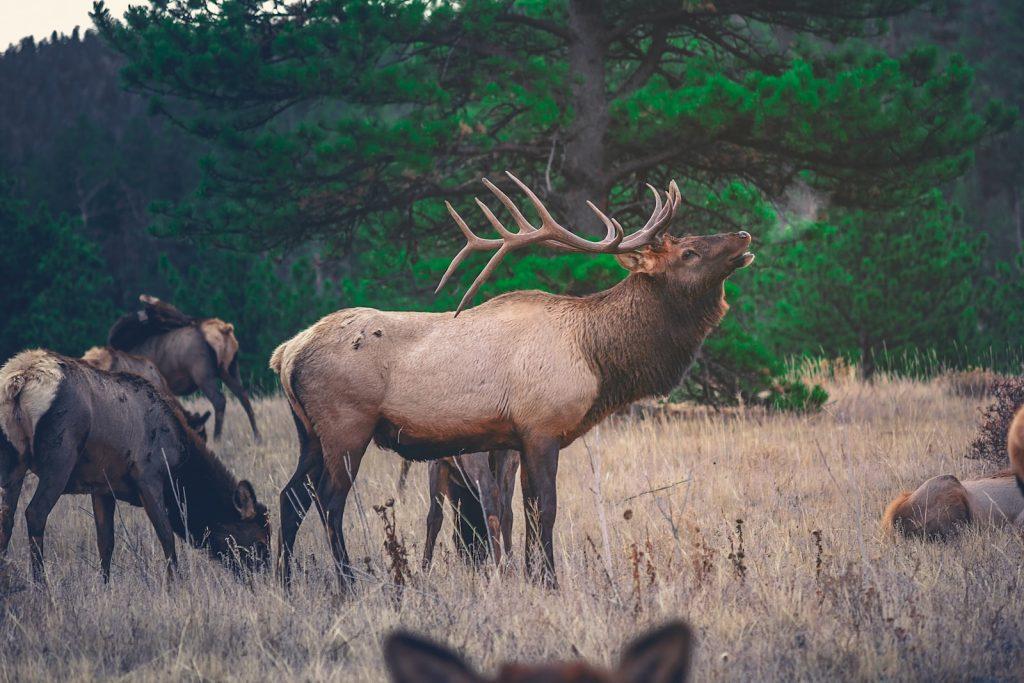
Hunting elk in the rain can be a rewarding experience for hunters, providing a unique opportunity to observe and harvest these majestic creatures in their natural habitat. For those who are willing to brave the elements and take on the challenge, there are many benefits to be gained from hunting elk in the rain.
When you want to hunt elk in the rain, you can actually have a great advantage in terms of concealment. Elk are incredibly sensitive to sound, and the rain can help muffle the noise of any footsteps or other movements. This makes it easier to get close to the elk without spooking them, allowing for a better chance of a successful hunt. Furthermore, the rain can also help mask human scent, making it even more difficult for elk to detect the presence of a hunter. We all know that sound and scent can spook the animals, so having this slight advantage is really beneficial.
Second, hunting elk in the rain can also be beneficial in terms of their behavior. Elk tend to be more active during rainy periods, as the cooler temperatures and reduced visibility can make them more comfortable moving around and foraging for food. This can provide hunters with more opportunities to observe and pursue elk.
Finally, rain can also create ideal conditions for tracking elk. The rain will wash away the dust and dirt from the ground, allowing for easier tracking of the elk’s footprints. This can make it easier to determine the direction in which the elk is headed, and can provide hunters with valuable information about their quarry.
Strategies for Identifying Elk Behavior in the Rain
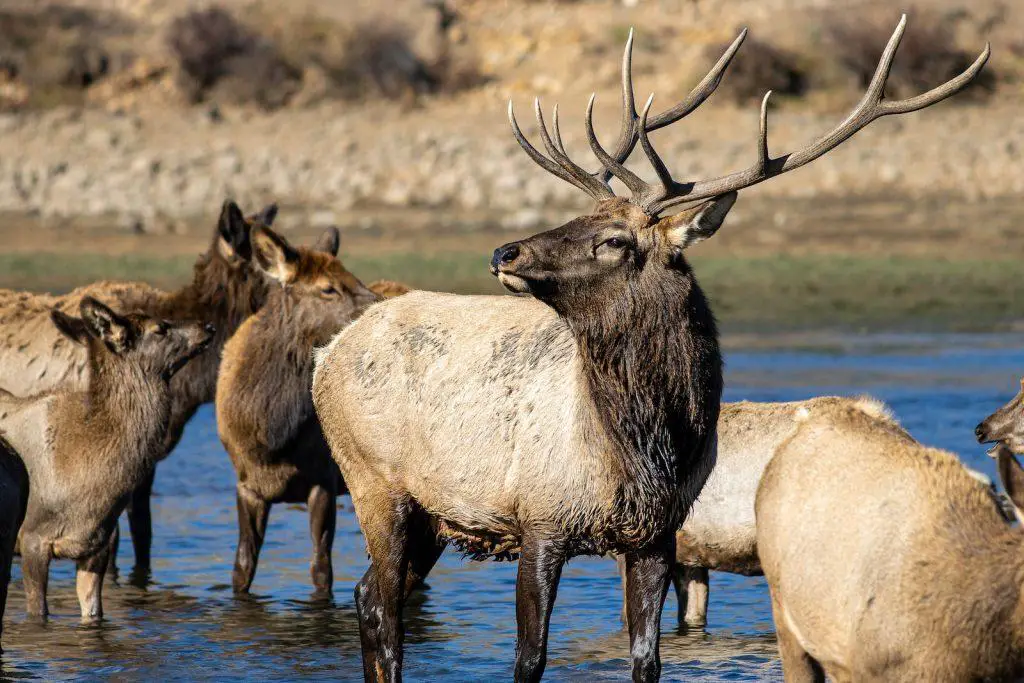
When you set out to hunt elk in the rain, identifying the behavior of the animals is the first step to a successful hunt. The elk will behave slightly different in the rain compared to dry weather. Knowing this can be an advantage in your hunt.
- Observe the Herd: One of the best ways to identify elk behavior in the rain is to observe the herd. As elk are herd animals, they tend to stay together and respond to changes in the environment together. By watching the group, you can observe how they react to the rain and determine their behavior.
- Observe the Terrain: Elk will often move to different areas when it rains as they seek shelter or food. Pay attention to the terrain they move and note how they interact with the environment. Are they moving to a sheltered area? Are they searching for food in the rain?
- Look for Signs of Stress: When it rains, elk may become stressed and exhibit signs of anxiety and discomfort. Look for signs of distress such as panting, restlessness and increased alertness. These behaviors may be indicative of the elk’s discomfort and can help you identify their behavior in the rain.
- Listen for Calls: Elk may also use calls to warn other elk of danger or to communicate with each other. Listen for any calls that may be a response to the rain and take note of the elk’s behavior after they make the call.
- Monitor the Weather: Pay close attention to the weather and make sure that the rain is not going to become too intense or last too long. Extremely heavy rain can cause extreme stress in elk, so make sure that the rain is not causing any undue stress on the elk.
By following these tips, you can easily identify elk behavior in the rain and make sure that the elk are comfortable and safe. Elk are incredibly resilient animals, but they can still be affected by extreme weather. Paying attention to their behavior and monitoring the weather can help ensure their safety and well-being.
How to Keep Your Gun Dry and Effective in Wet Weather

When hunting or shooting in wet weather, it is important to protect your gun from water damage. If your gun gets wet, it can malfunction or rust, both of which can lead to costly repairs and reduce the lifetime of the gun. When you hunt elk in the rain, it is very important to keep your gun dry and ready to fire. Here are some tips for keeping your gun dry and effective in wet weather:
- Choose the Right Gun: Before going shooting in wet weather, make sure you have a gun that is designed for wet conditions. Look for a gun that has a finish that helps repel water and has rust-resistant parts.
- Protect the Gun with a Cover: Make sure to bring a waterproof cover for your gun when shooting in wet weather. This will help keep the gun dry and protect it from water damage.
- Keep the Gun in a Dry Place: When not in use, make sure to store your gun in a dry place. A cool, dry closet is ideal. If possible, put a moisture-absorbing material in the closet with the gun to help keep the area dry.
- Clean and Lubricate Regularly: Clean and lubricate your gun regularly to help protect it from water damage. Be sure to use a lubricant that is designed for wet conditions.
- Clean Off Water Immediately: If your gun gets wet, take the time to wipe off the water immediately. This will help you prevent rust and water damage.
Following these tips can help you keep your gun dry and effective in wet weather and help extend the life of your gun.
Best Practices for Setting up a Rainy Day Hunting Blind
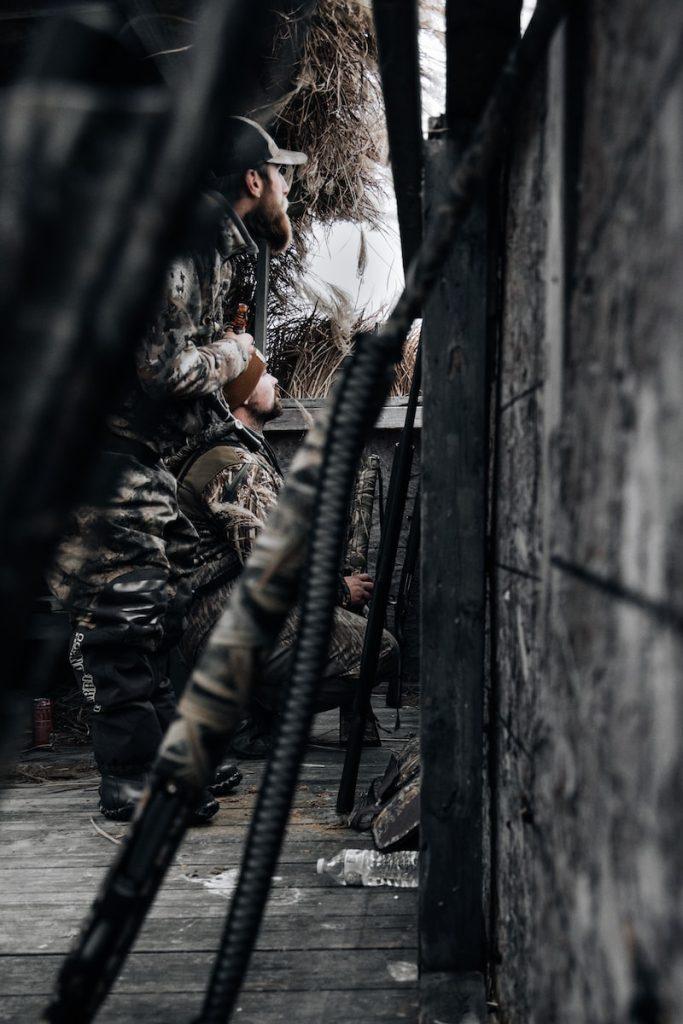
A blind is just one option when you want to hunt elk in the rain. You don’t have to use a blind, but it is one of the best ways to stay dry during a rainy elk hunt. If you’re interested in building a blind, we have a few tips that will help you maximize it’s potential.
- Choose a spot that offers natural cover: When selecting a spot for your rainy day hunting blind, look for a location that offers natural cover such as thick brush or trees. This will allow you to stay hidden from the game you are hunting, as well as provide some protection from the elements.
- Consider the wind direction: When hunting elk in the rain, wind direction is an important factor to consider, especially in rainy weather. Make sure you are positioned in such a way that the wind will be blowing away from you, so that your scent won’t alert the animals to your presence.
- Set the blind up in advance: To ensure that you are ready for a rainy day hunt, it is best to set up the blind in advance. This will allow you to make any necessary adjustments and ensure that you are well-hidden from wildlife. This also helps reduce noise on the morning of you elk hunt.
- Make sure the blind is waterproof: Before using your hunting blind in the rain, make sure it is waterproof. This will help keep you dry and comfortable in rainy weather. If your blind isn’t waterproof, consider purchasing a waterproof tarp to cover it.
- Wear the appropriate clothing: When hunting in rainy weather, it is important to wear clothing that is designed to keep you dry. Waterproof boots, a raincoat, and a hat are all essential for a successful rainy day hunt.
- Use scents strategically: Scent control is essential when hunting elk in rainy weather. Use scent-eliminating products to reduce your scent and make sure to place scent-eliminating products strategically around your blind to help mask your presence. Here are a few of the best selling elk scents.
Maintaining Camouflage in the Rain: Tips for Hunting Elk
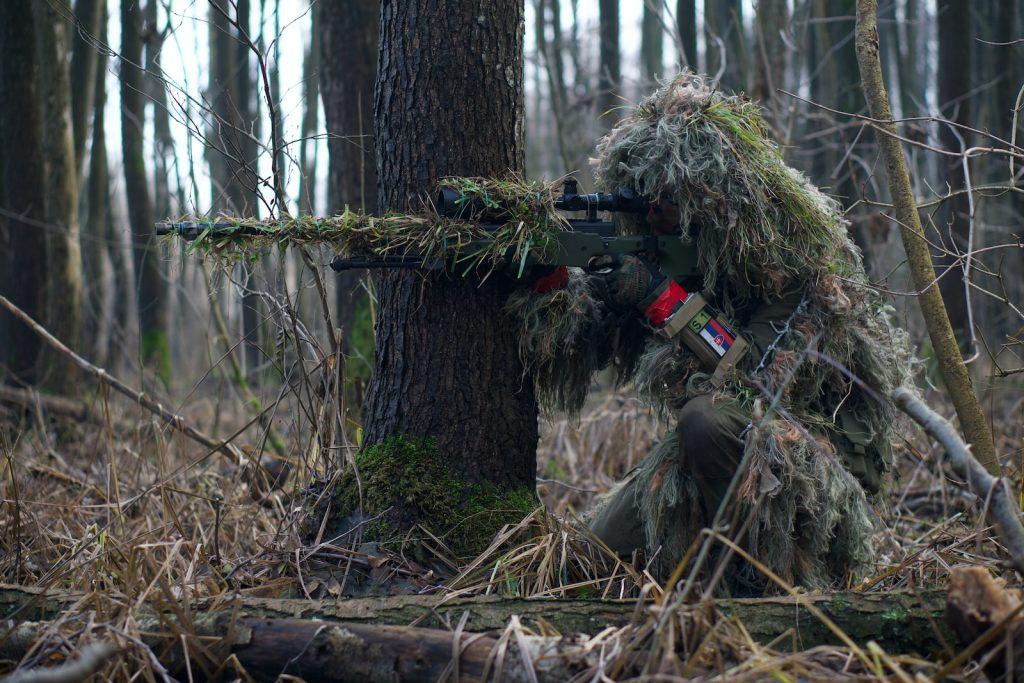
Hunting elk in the rain can be a challenge, especially when it comes to maintaining camouflage. Rain can wash away the natural colors of hunting gear, making it obvious to elk from a distance. To increase your chances of a successful hunt in the rain, here are a few tips for maintaining camouflage when hunting elk.
- Avoid Bright Colors: When selecting hunting gear, choose items that feature natural, muted colors such as greens, browns, and grays. Bright colors such as red, orange, and yellow are easily spotted by elk, so avoid these when possible.
- Use Camouflage Rain Gear: If you’re expecting rain, opt for camouflage rain gear that blends in with the environment. This will help to reduce your visibility and prevent you from being seen by elk.
- Pack a Rain Cover: If you’re hunting during a light rain, consider bringing a rain cover for your rifle or bow. This will help to protect your weapon from getting wet and prevent it from reflecting light, which could alert elk to your presence.
- Use Natural Scent Eliminators: Rain can wash away your scent and alert elk to your presence. To reduce your scent, use scent-eliminating sprays or soaps when hunting in the rain.
- Stay Low and Covered: When hunting in the rain, take extra precautions to stay low and out of sight. Avoid standing in open areas, as this can make you more visible to elk. Instead, stay in areas with dense vegetation and cover your movements with a tarp.
By following these tips, you can increase your chances of a successful when you hunt elk in the rain. Remember to choose the right gear, stay low and covered, and use natural scent eliminators to increase your odds of harvesting an elk.
Tips for Spotting Elk Tracks in the Mud
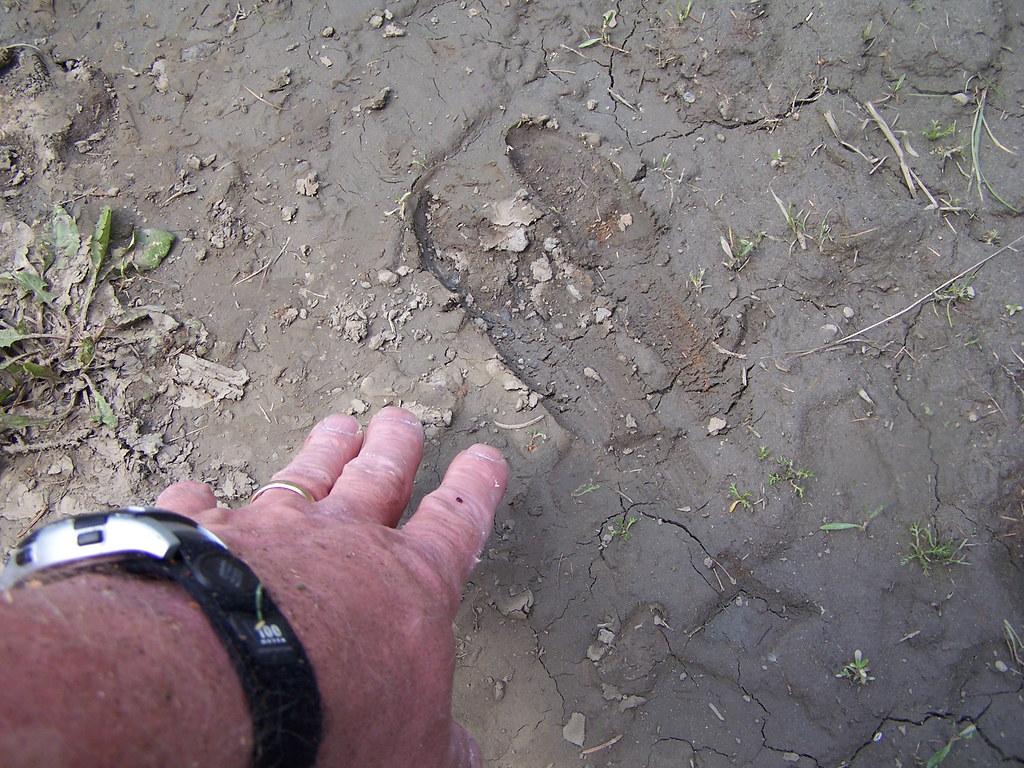
When you hunt elk in the rain, it is important to have an eye for detail. Elk tracks are relatively large, so they can be easy to spot if you know what to look for. Whether you’re trying to find the right spot to hunt, or tracking the elk you’ve already shot, here are a few tips for spotting elk tracks in the mud:
- Look for Clusters: Elk typically travel in groups of two or more, so look for clusters of tracks rather than individual prints. When you hunt elk in the rain, the ability to identify tracks is an advantage compared to dry weather.
- Take Note of Shape: Elk tracks have a distinct shape with a pointed toe on one side and a rounder toe on the other. Also, elk tracks tend to be larger than deer tracks and have a more circular shape than deer prints. Noting the shape can help you hunt elk in the rain.
- Look for Depth: Elk tracks tend to have deeper impressions than deer prints, so look for deeper prints.
- Look for Obvious Patterns: Elk tend to move in a straight line, so look for obvious patterns in the mud that indicate a straight line of tracks.
- Keep an Eye Out for Rubbing or Scraping: Elk will often rub or scrape the mud to mark their territory, so look for signs of rubbing or scraping.
With these tips in mind, you should be able to spot elk tracks in the mud with ease. The muddy conditions are actually a benefit when you hunt elk in the rain. You’re able to see more signs of activity than you would in dry weather.
Conclusion
You should have a better idea of how to hunt elk in the rain. Hunting elk in the rain can be a rewarding experience with many benefits. The rain can provide concealment, encourage elk activity, and make tracking easier. For those who are willing to brave the elements, hunting elk in the rain can be a great way to observe and harvest these majestic creatures. We hope these tips help you to hunt elk in the rain. Once you’ve bagged that trophy elk, be sure to check out some of our wild game recipes.
